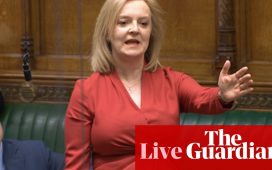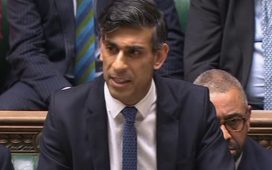The UK economy is at a pivotal moment, as the chancellor gives his budget speech with businesses and workers under the most pressure since the pandemic struck a year ago.
Here are five key charts that will underpin Rishi Sunak’s statement on Wednesday afternoon.
The UK economy
After gross domestic product (GDP) shrank by 9.9% in 2020 – the worst performance since 1709 – the economy remains under pressure at the start of 2021 as the toughest lockdown since the start of the pandemic bites. However, official forecasts due on Wednesday from the Office for Budget Responsibility could paint a rosier picture, as progress administering the vaccine paves the way for a swift recovery later this year.
The economy performed better than forecast in November as businesses learned to adapt, with GDP 7.8% below its pre-virus level at the end of 2020 compared with an estimate of 12%. The key remaining question is how long the economy will take to recover its pre-crisis peak, and the extent of any permanent damage. The OBR had previously pencilled in a 3% permanent hit from Covid by 2025.
UK public finances
Official figures put the budget deficit – the gap between spending and income – at £271bn for the first 10 months of the financial year. With just two months of the 2020-21 financial year left to tally, the final sum is expected to be below the £394bn OBR estimate made last November.
The national debt – the combined total of every deficit – has risen above £2tn, equivalent to more than 100% of GDP, and is expected to remain at about that level over the next five years.
Sunak has said he wants to use the budget to “level with people” about the strain the public finances are under, widely seen as paving the way for tax rises or a renewed austerity drive. In November, the OBR said £27bn worth of tax rises or spending cuts would be necessary for day-to-day spending and receipts to be brought back into balance, but given the vast uncertainty over the economic outlook this remains unclear.
Some economists say there may be no need for tax rises at all, while others warn efforts to cut the deficit too soon would worsen the situation by choking off growth.
UK unemployment
Redundancies have risen at the fastest rate on record, driving up unemployment to 5.1% in the three months to the end of December – representing 1.74 million people. However, the impact on jobs has been cushioned by furlough and business support schemes, preventing a sharper increase to the 1980s levels forecast last spring.
On its last estimates, the OBR pencilled in a peak of 7.5% in the middle of 2021 – 2.6 million people – up from about 4% before the pandemic struck. However, the forecast was made before tougher coronavirus restrictions were introduced. Furlough has also been pushed back to the end of April, and further extensions could delay worse job losses.
Furlough
During the latest lockdown the number of furloughed workers in the UK has risen by 700,000 to reach 4.7 million, with young adults, women and those in hospitality the most likely to be away from their jobs.
The figures suggest this lockdown is less severe than the first, when almost 9 million jobs were furloughed. More than 11 million jobs have been furloughed in total over the past year, at a cost of £54bn so far. Sunak is expected to announce an extension to the scheme until the end of September.
Inequality
British households saved record amounts during the pandemic, due to the collapse in spending on travel, retail and leisure. The chief economist of the Bank of England, Andy Haldane, said this meant families were poised “like a coiled spring” to fuel a rapid return to economic growth with a multibillion-pound spending spree.
The UK’s households savings ratio – a snapshot of savings as a proportion of disposable income – hit a record high of 27% in June last year. Between March and November, excess savings were estimated at £125bn, according to the Bank. Sunak has also expressed optimism that encouraging consumers to spend could drive the recovery.
But this rise in average saving masks severe financial pain for lower-income households who are bearing the brunt of Covid job losses. It is mostly those in the top 40% saving money and it is unclear how much of that will be spent.














